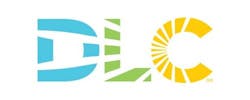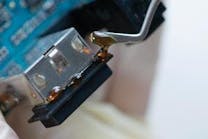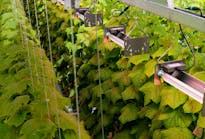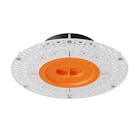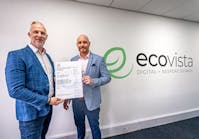DesignLights Consortium Seeks Comments on Updates to Horticultural Lighting Technical Requirements
MEDFORD, MA – The DesignLights Consortium (DLC) today released for comment several draft changes to its performance specification for horticultural lighting products, an industry benchmark designed to boost efficiency and reduce electricity consumption in the expanding and energy-intensive indoor/vertical horticulture and cannabis cultivation markets. Importantly, the proposed changes would include a previously ineligible segment of the grow-light market, increasing the quantity and variety of products on the DLC’s Horticultural Qualified Products List (QPL).
Finalized last fall following a two-year stakeholder input process, the DLC’s Technical Requirements for Horticultural Lighting address a booming demand for efficient and effective horticultural lighting in the face of a rapid increase in indoor “vertical” farming and newly legal cannabis cultivation in several US states and Canada. Utilities across North America have begun relying on the new policy and corresponding QPL in deciding which lighting products to incentivize in energy efficiency programs aimed at commercial horticultural customers.
The DLC has proposed updates to three aspects of the specification. The changes would take effect on Oct. 15, following consideration of stakeholder input gathered during a 35-day comment period that runs from today through Sept. 3, 2019. The DLC will host a webinar at 1 p.m. EDT on Aug. 6 to review the proposed changes.
Today’s draft updates include a proposal to add Horticultural QPL eligibility for fixtures powered by a remote DC power supply – a class of products originally excluded due to concerns about how to fairly measure and compare efficacy and measurement differences with AC-powered fixtures. As a starting point to meet this technical challenge, manufacturers seeking utility efficiency incentives for DC-powered products would need to pair them with a power supply that is at least 92 percent energy efficient, as rated by the widely accepted 80 PLUS industry standard.
In addition, the draft changes include implementation of the DLC’s previously-disclosed transition plan to require manufacturers to use horticulture-specific terms to describe the flux maintenance of their submitted fixtures, rather than measurements expressed in lumens (which measure the brightness of light perceived by the human eye and unevenly emphasize some parts of the spectrum important for photosynthesis). The DLC is also proposing another year for manufacturers seeking Horticultural QPL approval to transition away from the decades-old file format used for reporting computer simulations of product performance in favor of a new industry standard for reporting aspects such as spectral content and intensity distribution (the Illuminating Engineering Society’s TM-33 document).
More information, including technical context and rationale for all three proposed updates, are found here: https://www.designlights.org/default/assets/File/Horticultural/DLC_DRAFT-V1-2-Testing-Reporting-Requirements-Horticultural-Lighting.pdf.
“Horticultural lighting represents one of fastest growing electric load categories for many of the DLC’s utility members, and we were keen to get out in front of an opportunity to mitigate the energy load through the specification we launched last fall,” DLC Executive Director Christina Halfpenny said. “At the same time, we know this is a young industry undergoing dynamic change and we’re keeping our ears to the ground to make sure we are responsive to realities in the marketplace. The updates we’re publishing today reflect that balance while still meeting the performance specifications we established in the original specification.”
“This update shows that the DLC is listening to industry to understand issues and working with stakeholders to provide a pragmatic path forward,” said John Arthur Wilson, Stakeholder Solutions Manager at Seattle's Lighting Design Lab. “From a utility program perspective, these updates legitimize the role of the QPL because they show it is both progressive in its adoption of emerging technologies (i.e., DC-powered fixtures) and accommodating with its revision to TM-33 requirements.”
A February 2019 report projected that the US vertical farming market will reach $3 billion by 2024, exhibiting a compound annual growth rate of more than 24 percent between 2018 and 2024. Meanwhile, research conducted by Navigant Consulting, Inc. for the US Department of Energy (DOE) has put the annual electricity consumption of US horticultural lighting installations at 5.9 terawatt hours, equal to the annual electricity usage of approximately 550,000 US households. The report estimated that energy consumption will increase between 15 and 25 percent per year as more indoor agricultural operations come on line. Switching to all LED technology, however, could reduce the sector’s annual electricity consumption by 40 percent, a savings of approximately $240 million, according to the DOE report.
To submit comments on the draft updates, please email [email protected] by Sept. 3, 2019. Register for the Aug. 6 webinar here: https://register.gotowebinar.com/register/4462373839223913485. Learn about the DLC Horticultural Lighting Program here: https://www.designlights.org/default/assets/File/Workplan/DLC_Testing-Reporting-Requirements-Horticultural-Lighting_V1-0.pdf.
About DesignLights Consortium: The DesignLights Consortium is a Medford, Massachusetts- based non-profit working across the US and Canada to accelerate adoption of efficient, high-quality commercial and industrial solid-state lighting. Its Qualified Products List (QPL) of over 375,000 lab-tested luminaires guides the decision-making of utilities across North America in their design of incentives for energy efficient lighting in the C & I sector.
Contact:
DesignLights Consortium
